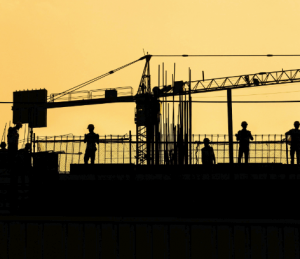The architecture and construction industries have been changing massively in recent years. Many of the changes are in light of the inquiry into the Grenfell disaster. Now, with the release of the official second stage report, there is likely to be even more change. We want to look at this here today and the impact it could have. As top architects in London, we strive to deliver the best projects and will adapt to any changes in our industry.
Responsibility
 One of the saddest things about the Grenfell disaster is that there was so much finger pointing. Blame was laid at the feet of various parties, including the council (also the client in this case), Studio E architects, building contractor Rydon, fire engineer Exova, facade contractor Harley, panel manufacturer Arconic, insulation manufacturer Celotex, and agents Artelia. The architect was especially critical of the building regulations.
One of the saddest things about the Grenfell disaster is that there was so much finger pointing. Blame was laid at the feet of various parties, including the council (also the client in this case), Studio E architects, building contractor Rydon, fire engineer Exova, facade contractor Harley, panel manufacturer Arconic, insulation manufacturer Celotex, and agents Artelia. The architect was especially critical of the building regulations.
The latest enquiry report puts the blame squarely with Studio E. The panel said they had a “significant degree of responsibility”. Critically, they had a “fundamental misunderstanding” of key things like their obligations and the nature of the project.
However, the report did not stop at criticising Studio E. They actually said the “mistakes and oversights” here can be seen as “widespread failure” across the whole of the architecture and building professions. Crucially, they think there needs to be a massive improvement in competency. Plus, there needs to be less willingness to compromise on quality in search of reducing costs.
The report ultimately recommends that ARB and RIBA review and improve the approach to educating and training architects.
What could happen?
As architects in London, we keep an eye out for any changes that affect our profession. There have already been some big ones, including ARB introducing a mandatory scheme so every architect has to show their continued development and competency. They’ve also made changes on the education side of things, focusing on competency.
The ARB has now said it will take some time to consider the report’s recommendations. They will examine the need for a “profound shift in culture and behaviour” in the sector.
RIBA has also acknowledged the findings in the report. They said they will look at how they can make further changes to improve the standard of training in the architecture profession. Crucially, they will ensure all members are aware of the role and responsibility of architects, especially in terms of safety and ensuring a safer built environment.
A crucial recommendation in the report is to introduce a new statutory requirement. This would mean that any application for building control approval for high risk buildings should have a supporting statement from the designer to ensure safety.
There should also be action on completion of the projects. This should confirm the building has been designed to be as safe as possible, ensuring it complies with the building regulations.
Ultimately, the expectation is the architecture and construction industries will put a new emphasis on responsibility, compliance, and safety. Notably, they will need to be able to deliver robust fire safety systems and other safety measures from the outset of projects. This should ensure all occupants will be as safe as possible, particularly the most vulnerable people.
Talk to top architects in London
Coffey Architects is a team you can rely on if you need help with a project. We understand our role and responsibility in key areas like safety and sustainability. So, if you want professional support from architects in London, speak to us.
